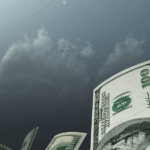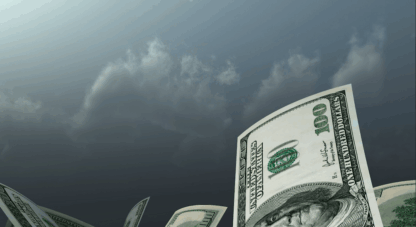By conquering this new world, compels me now
To do what else, though damned, I should abhor.
So spake the Fiend, and with necessity,
The tyrant’s plea, excused his devilish deeds.
John Milton, Paradise Lost
No matter your point of view, no matter your level of optimism, any objective view of America today must acknowledge a deeply troubled nation. A two-party political system has not yielded balance; a syncretistic religious belief system has not produced faith that is either functional or worth suffering for; and multiculturalism has certainly not yielded a stronger and more unified nation. We are fractured, we are fractious, and we are fractionalized. In short, we’re a mess.
That’s not focusing on the negative, it’s acknowledging the obvious. If nothing else, it assures hundreds of millions of Americans that they’re not crazy. It really is a mess—which is not to say that there’s no hope. There’s always hope.
But hope historically manifests in peace and unity only after crisis (which is a natural consequence of highly factionalized countries). Repelling a foreign invader tends to bring people together, as does the peacemaking process after a civil war. Because of these facts, crisis creation is sometimes used by leaders to unify their countries. If things get out of control, they start a war. It diverts attention from the leader’s actions (or inactions) and unifies the nation’s efforts for a while.
However, initiating a crisis is always a crapshoot. Will the crisis remain manageable or will it spiral out of control? Will it allow the leader to shepherd his battered flock to the desired place or will it destroy the flock altogether? FDR won this gamble. Hitler lost it.
But war is not the only way to initiate or undergo crisis. The substitute for war in the very dangerous nuclear age has become climate change. In the name of saving the planet, we seek to destroy progress. If pursued without opposition, this process would destroy hundreds of millions of people on the planet who depend on carbon-emitting technologies for their livelihoods and survival. Incidentally (or so it is portrayed), it would also concentrate immense power in the hands of those handling the technological regress.
Never mind that technological research constantly produces stunning advances in energy production (or that climate has changed many times in the history of the world). The best way to surmount technological limitations or problems is to move forward, not backward—with occasional but distinctly limited exceptions. But when political power is the objective, facts like this don’t matter.
You might or might not have influence over the direction the country chooses over the next several years, and you might or might not have some influence at the state or local level, but you certainly have influence over your own actions and those of your family. The McAlvany companies’ products and education efforts have always been directed at this personal level, with immense amounts of information that can be used at higher levels as opportunities present themselves.
The publications below will sharpen your thinking, educate you on things you need to know, and help you formulate a plan to survive a nation in crisis. The price is right, and the value is immense. Please take advantage of them with our compliments.
Key Takeaways:
- Government by purchased power
- Known: rates are going down; unknown: how much, how fast
- Oops! BLS’s payroll data way off
- Which is better since 1971, gold or the S&P?
The McAlvany Weekly Commentary: 400 oz Gold Bars Now A Million Bucks
David and Kevin start things off with a look at the dollar versus gold over time, and they do it with a compelling anecdote. Twenty-five years ago, a million-dollar winner on a game show could buy ten 400-ounce bars of gold with their winnings. Today, they could buy only one. It’s a compelling picture of what government has done to our money. From there, the hosts move into a discussion of inflation in general, along with the official aversion to any amount of deflation. The inflation of the money supply, coupled with today’s high interest rates, means the government paid $89 billion in July for interest on its debt, even as it suffered a budget deficit of nearly a quarter of a trillion dollars that month. The hosts show how this situation is worsening by the day, and how it impacts the individual and the nation. David discusses the characteristics of a democracy in which votes are bought by politicians running for office, and there is no incentive to be fiscally responsible. Given the advanced state of overindebtedness the country is in, spending must be severely curtailed and revenues increased on those who are currently avoiding taxes. Individuals and small businesses are maxed out, but big businesses have armies of accountants and lawyers to avoid taxes.
Credit Bubble Bulletin: Something of a Victory Lap
Doug sets this week’s wrap-up in the run up to and happenings in the Fed’s Jackson Hole Economic Symposium. Given that we’re only weeks away from a highly anticipated cut in interest rates, the question is whether the cut will be cautious or aggressive. There is no shortage of commentary on what Powell should do regarding communication, policy, and rates, and Doug quotes some of them, but Powell seems to continually differ from those who list specifics as to what they think he should do. Still, “markets might have fancied a more cultivated essay on enhancements to the Fed’s policy framework, reaction function, and transmission mechanism, but they got what they wanted: ‘The time has come for policy to adjust. The direction of travel is clear, and the timing and pace of rate cuts will depend on incoming data, the evolving outlook, and the balance of risks.’” A key question for Doug remains why general financial conditions have remained largely unresponsive to the Fed’s monetary tightening. It’s also true, however, that the Fed has introduced many market distortions by accommodating leveraged speculation and emboldening ever-greater risk-taking and leverage. Doug gives specifics and discusses the risks we now face due to these policies and distortions.
Hard Asset Insights: Not Buying It
Morgan begins his analysis this week by looking at an unusually large BLS preliminary benchmark revision to non-farm payrolls. “The revision knocked 818,000 off total nonfarm jobs in the 12 months ended March 2024. In percentage terms, the headline revision was -0.5% of total nonfarm employment…five times worse than what might normally be expected.” This revision of course gives Jay Powell political cover for his intended interest rate cut next month, so what was already expected is a near certainty now. “HAI believes that the global economy has turned a corner toward a secular shift to elevated and persistent inflation. Given that structural backdrop, the imminent rate cutting cycle runs the risk of undoing recent progress toward cooling price pressures. So, while Powell and the Fed are taking something of a victory lap over inflation now, the celebration may be short lived.” So what’s the solution? Big changes in policy are required for changes at the national and international level. Most people should be concerned about what they can do personally to prepare for the new economy. Long-time readers of HAI will find no surprises here, but the advice is evergreen. Or perhaps we should say evergold.
Golden Rule Radio: Dollar Weakness Growing
Miles’ overview this week has the metals up, with a new record high price for gold corresponding to a sizeable dip in the dollar. After this view in detail, Miles and Rob take a very big step back and look at the big picture. Since 1971, the appreciation (in dollars) of gold has matched that of the S&P 500. Given the immense difference in risk taken by equities investors to get here from there, that is a significant comparison. Back to the short term, Miles expects gold to take a breather in its steep climb due to the expected interest rate reductions beginning in September and the election in November. That, in his opinion, would be healthy, and would portend good things to come for its continued strength. Miles makes some important distinctions between gold’s recent move up and that of silver. Both were strong, but the context for each was different. The hosts then turn their attention to the US dollar and its prospects in the coming interest rate reduction environment. There are some obvious ramifications they touch on, but they then put those into a larger perspective than might ordinarily be considered.















